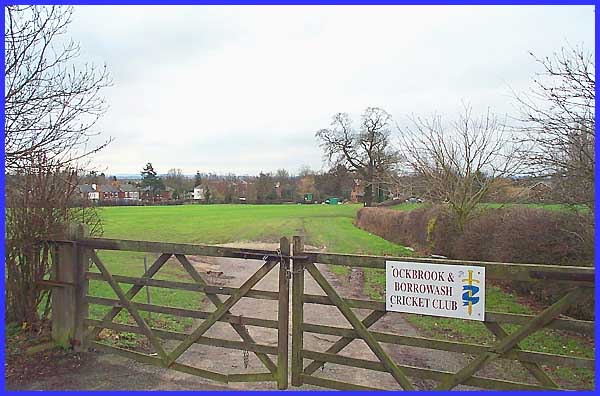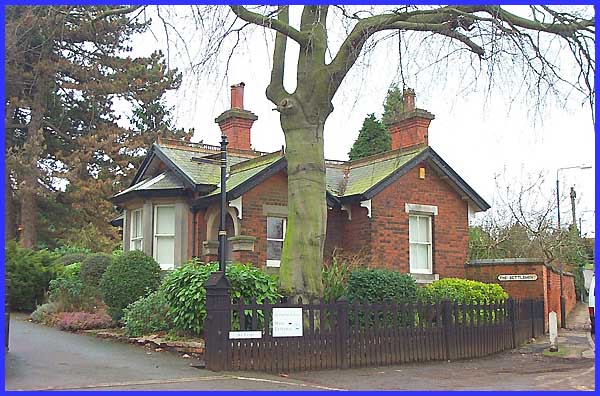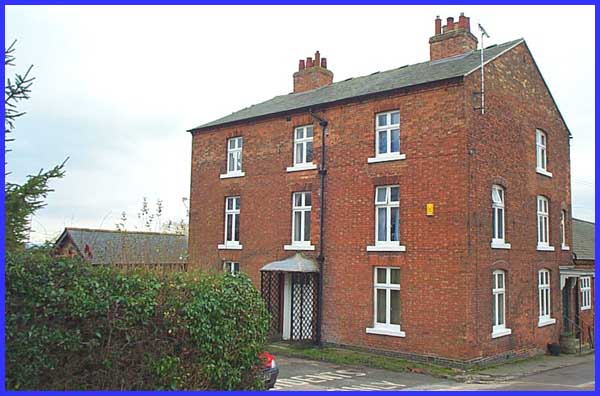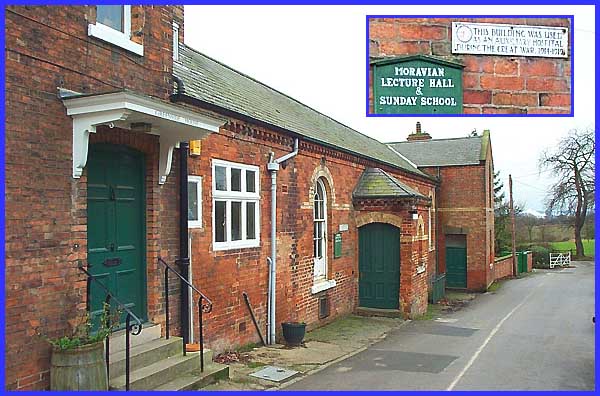Ockbrook - Part 02
- Bakehouse Lane To The Settlement
w/e 25 January
2004

I left Part 1 of this series
outside Plant's shop on the corner of New Street and this part
picks up the trail at the other end of New Street which can be
seen to the right of this image. Almost directly opposite is
Bakehouse Lane (hidden) and on the corner stands another of those
four or five pubs in the village. This one is called the Queen's
Head. It is not unusual for pubs to change their names and this
one is no exception as it was once known as the Horse and Jockey.
What is surprising though is that the Queen that inspired the
name change was Victoria and that the event was her accession
in 1837. During the Second World War, the pub was used by the
Home Guard as their HQ.
|

Walking by the side of the
pub along Bakehouse Lane soon leads to the Cricket Club. The
club was established in 1872 and one fine gentleman who went
by the name of Whackie Harrison played his last innings for the
club after a 42 year career in 1933.
|

At the top of Bakehouse
Lane the road turns right into The Settlement. There is a lane
to the left and a private drive between. At this junction stands
Grange Lodge, an 1865 building bounded by a picket fence and
surmounted by unusual ornate ridge tiles. Respecting the "No
Entry" sign on the fence, I walked down the lane to the
left for the next photo.
|

Grange Lodge was built as a lodge house to The Grange which was
formerly known as Swallows Rest. I thought that name suggested
yet another pub but I understand that the house was built in
the early nineteenth century as a retirement home for William
Mallalieu, a descendant of the Huguenots and the last of the
family to live in the area.
|

Returning to The Settlement this fine three storey building on
the right hand side was indeed, not only a pub but also a malthouse
and went by the name of the New Inn. It began trading in 1792.
This is perhaps an opportune time to relate a little of the history
of Ockbrook. It is actually
two villages in one, the original village dating from the sixth
century having been founded as an Anglo Saxon settlement by Occa
- hence the name Ockbrook. Life continued in a rural nature until
the 1700s when a gradual change started to take place. Coal mining
at the nearby villages of Dale and Stanley provided employment
for some of the men of Ockbrook. The coal was transported through
Ockbrook to the Derby Canal at Borrowash and in the eighteenth
and nineteenth centuries, the village became an important stocking-making
centre as industry began to take hold. It was during this period
that a Congregation of the Moravian Church was formed and the
church was built on a hill to the north of the original village
in 1752. Thus began the Settlement.
|

We shall learn more about the impact
the Moravians had on the village in a later part in this series
but to return to the three storey ex-public house that is now
called Greenside, it is known that many visitors to the Moravian
Settlement stayed here, even on one occasion, the Bishop of Lichfield.
An extension to Greenside in 1865 and 1880 became the Sunday
School and a plaque on the wall (inset) shows that it was used
as an auxiliary hospital for injured servicemen during the Great
War (1914-1918).
|

